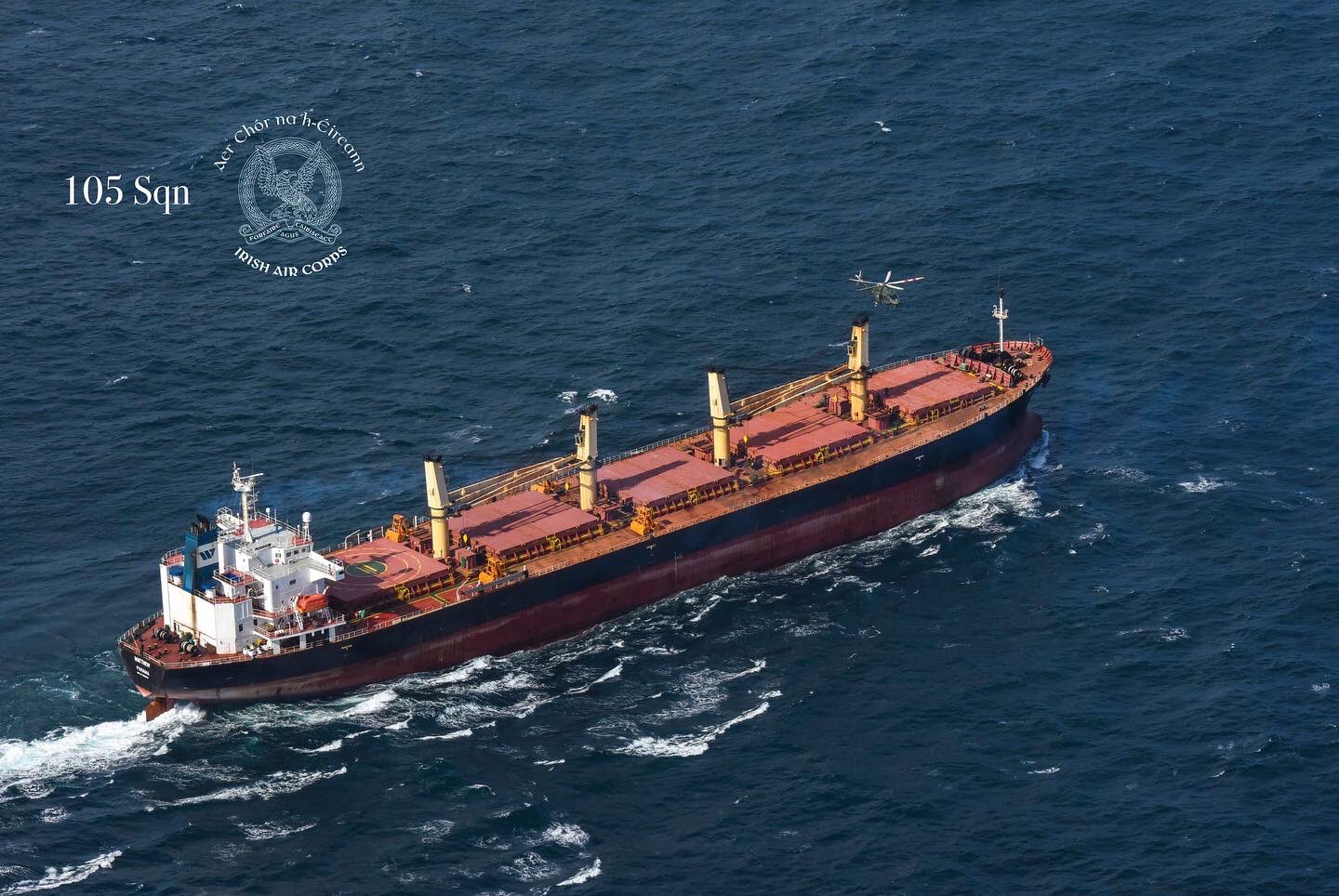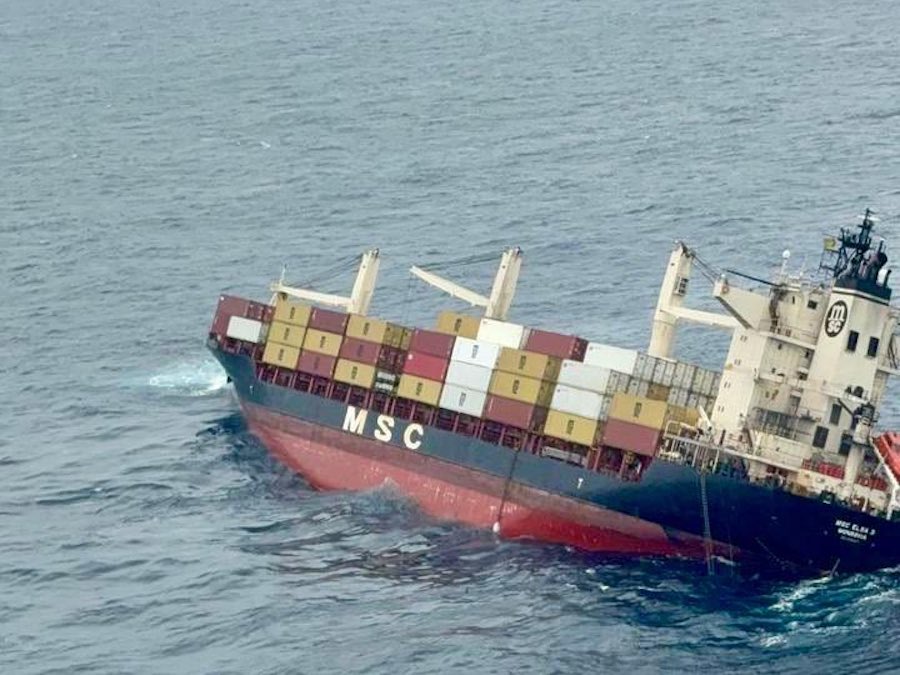(Bloomberg) — Canada is pulling ahead of the U.S. in the contest to be the first exporter of liquefied natural gas from the North American shale bonanza to Asia’s $150 billion LNG market.
An LNG terminal being built at a cove north of Vancouver, financed by a Houston private-equity firm, is scheduled to begin shipping the fuel across the Pacific Ocean in mid-2015, eight months before the first continental U.S. plant is slated to start. Canada’s government has approved twice as much LNG export capacity as its southerly neighbor, evincing a friendlier attitude toward selling domestic gas to the highest bidder and positioning the nation as the go-to source of gas in North America for overseas buyers.
International energy giants from Exxon Mobil Corp. to Malaysia’s Petroliam Nasional Bhd are considering terminal projects in western Canada to supply Asian utilities and factories that are paying more than four times the price of U.S. markets. Chevron Corp. said it’s focusing all of its North American LNG efforts north of the U.S. border because of the more favorable regulatory climate and closer proximity to Asia, making exports more profitable for producers.
“The smart money is going to Canada” to export LNG, said Michelle Foss, chief energy economist at the Center for Energy Economics at the University of Texas’ Bureau of Economic Geology. “They don’t have any objections to exporting gas and it’s closer to Asia, which cuts down on shipping costs.”
Project Risks
Taking gas from the vast fields dotting Alberta and British Columbia and super-chilling it to a liquid for ocean-going tankers has price risks. LNG terminals can cost tens of billions of dollars to construct and take decades to pay returns. That can make a facility obsolete should internal North American demand and prices escalate to where domestic sales become more profitable than exports, Foss said.
In addition, Canadian LNG developers counting on the tradition of basing sales on world oil prices could be undercut by Louisiana and Texas-based producers planning to link contracts to lower-cost Gulf Coast gas markets, said Dale Nijoka, global oil and gas leader at Ernst & Young LLP.
Three gas export projects have received permission to ship LNG from Canada’s Pacific Coast to destinations such as Japan and China, compared to just one in the U.S., on the Gulf Coast, according to data compiled by Bloomberg. In the U.S., policymakers and industry leaders are divided over how tightly to control gas exports for fear of driving up domestic prices for the power-plant and furnace fuel.
Doubling Demand
“In the long term, Canada, which carries lower political risk, is probably more positively seen than the U.S. projects,” Asish Mohanty, senior LNG analyst at Wood Mackenzie Ltd. in Houston, said in a telephone interview. “The political risk of U.S. LNG is probably going to outweigh the benefits.”
Energy companies chill gas to -160 degrees Celsius (-256 Fahrenheit) to create a colorless liquid 1/600th of its original volume for long-distance shipment aboard tankers twice as long as Seattle’s Space Needle is high. Worldwide gas demand is expected to more than double by 2035 to 6.6 trillion cubic meters (233 trillion cubic feet) a year, according to the International Gas Union, a trade group based in Vevey, Switzerland and Oslo.
Global demand will begin to outpace LNG supplies around the end of this decade and may exceed production by 100 million metric tons (4.87 trillion cubic feet) annually by 2025, Chevron Chairman and Chief Executive Officer John S. Watson told analysts in New York last month.
Asia leads the world in the growth of demand for LNG, as Pacific Rim economies expand power generation amid energy-hungry manufacturing sectors, Watson said during the March 12 event.
$150 Billion
Kurt Glaubitz, a Chevron spokesman, didn’t return a voice mail left at his office requesting comment on Canada’s LNG outlook. Aaron Stryk, a spokesman for Exxon, declined to comment for this story.
“Petronas looks towards Canada’s stable fiscal and regulatory regime as a positive environment for investments of this magnitude,” as well as the country’s “vast” gas supply and short shipping times to Asia, Michael Culbert, chief executive officer of the company’s Canadian unit, said yesterday in an e-mail.
The Asia-Oceania region, excluding Australia, imported 8.847 trillion cubic feet of gas in 2011, the most recent year for which data was available, according to the U.S. Energy Department in Washington. At the $16.50 per million British thermal units that Japanese importers are paying for some supplies, that regional gas market has an annual value of $150 billion.
Market Reversal
As recently as five years ago, explorers and investors from ConocoPhillips to billionaire investor George Kaiser were predicting the U.S. would need to import LNG to meet domestic demand as output stagnated from its aging fields. Dow Chemical Co., Chevron and Total SA were among the heavyweights that signed long-term contracts for LNG import capacity along the Gulf Coast.
At the same time, a then-little-noticed revolution in drilling and hydraulic fracturing was under way that subsequently vaulted North American gas production to a record high, saturating local markets, collapsing prices and prompting would-be importers to look overseas for an outlet for swelling fuel supplies.
U.S. Delays
After issuing the first permit to export continental U.S. gas to nations without free-trade agreements almost two years ago, the federal government suspended reviews of all other applications so it could study the potential impacts of overseas sales on domestic energy prices. There are now 19 proposed U.S. LNG projects awaiting export permits, with the longest on hold for 28 months.
In contrast, Canada, which has seen a similar surge in gas production, issued its third LNG export license in February for a project led by Royal Dutch Shell Plc in British Columbia. All together, the trio of approved Canadian projects will have the capacity to ship 4.66 billion cubic feet of gas a day, more than double the 2.2 billion cubic feet of capacity that has been permitted in the U.S., according to data compiled by Bloomberg.
Asian energy consumption trends will determine the number of LNG terminals that get built in Canada, where the gas endowment is so large the government has little reason to restrict exports, Joe Oliver, the nation’s natural resources minister, said in an interview in Vancouver.
Abundant Supply
“We have so much gas in relation to what we need. There are estimates that we’ve got between 100 and 200 years of domestic supply,” Oliver said, pointing five export projects that may move ahead. “If they all do, it’s still considerably less than the amount that would start to impinge on our domestic needs over the long term.”
Douglas Channel Energy Partnership plans to begin shipping as much as 700,000 tons of LNG annually from a floating plant near Kitimat, British Columbia, in mid-2015. The project is a joint venture of the Haisla Nation aboriginal community and LNG Partners, a Houston-based buyout firm led by Thomas and Glenn Tatham.
Thomas Tatham is the former chairman and CEO of Deeptech International Inc., an offshore energy explorer that also operated what once was the largest network of Gulf of Mexico gas pipelines. Deeptech sold to El Paso Energy Corp., now part of Kinder Morgan Inc., for $298 million in 1998, according to data compiled by Bloomberg. Tatham did not respond to an e-mail seeking comment.
Cheniere Timing
Douglas Channel’s closest U.S. competitor, Cheniere Energy Inc., won’t be finished building its first LNG export module until February 2016, according to a March 20 filing by the Houston-based company with the Federal Energy Regulatory Commission in Washington.
“The race is on and governments need to recognize that and take some steps but industry, really, at the end of the day, is going to drive this,” Jim Prentice, senior executive vice president and vice chairman at Canadian Imperial Bank of Commerce, said in an interview in Vancouver.
Watson, whose San Ramon, California-based company is building $85 billion in Australian LNG export terminals and plans to begin shipping LNG from Angola by July, said Canada is a better place than the Gulf Coast to liquefy and ship the fuel. He cited western Canada’s relative nearness to Asian markets and a political environment where objections to gas exports are largely absent.
Chevron Focus
“One of the things attracting us to Canada is that it’s already a natural resources exporting country,” Watson said during a meeting with reporters after his presentation to analysts. “We’ve decided that Canada is going to be the focus of our North American LNG efforts.”
Chevron agreed in December to buy a 50 percent stake in the Kitimat LNG project near the Douglas Channel project. The Horn River and Liard gas fields that will supply Kitimat may hold more than 50 trillion cubic feet of gas, Watson said, or enough to supply South Korea’s current level of imports for 29 years.
BG Group Plc, a U.K.-based producer of LNG from the Middle East and Caribbean, has proposed a gas-export project for Prince Rupert, British Columbia. Exxon, the world’s largest energy company by market value, also has said it’s considering LNG exports from the same area. Partnerships between AltaGas Ltd. and Idemitsu Kosan Co., as well as Cnooc Ltd. and Inpex Corp. are also studying projects.
Pricing Contracts
A key element of making Canadian LNG profitable will be multi-decade contracts indexed to world crude prices rather than North American gas, Watson said. Oil-linked prices are the only way to ensure enough cash flow to justify the expense and time involved in constructing LNG complexes that cost tens of billions of dollars, he said.
The LNG industry has used crude-linked prices since its inception a half-century ago in Algeria, Ernst & Young’s Nijoka said. Unlike gas, oil was a globally-traded commodity with transparent price-discovery mechanisms anyone could monitor anywhere in the world, he said.
Cheniere has bucked the rest of the LNG industry by basing contracts on the U.S. benchmark price from the Henry Hub pipeline nexus in Erath, Louisiana. The Henry Hub price has averaged $3.46 per million British thermal units this year, one- fifth the rate Japanese utilities pay for LNG imports from major sources such as Qatar and Indonesia, according to data compiled by Bloomberg.
Holding Out
Gas buyers in Asia and elsewhere probably will migrate to more Henry Hub-based pricing as existing long-term, oil-indexed contracts expire, Nijoka said. Energy producers will resist as long as they can to protect profits, he said.
“These companies like the idea of oil-based pricing because it gives them a lot more money, but the Asian buyers are pretty shrewd,” Nijoka said.
Despite the steep discount of U.S. gas to international prices, many Asian LNG importers may prefer to retain crude- linked contracts to avoid the volatility of domestic U.S. energy markets that can be roiled by hurricanes, winter storms and heat waves, said Betsy Spomer, senior vice president of business development at BG Group.
“Oil, as an index, has been robust for a long time, primarily because it’s a truly global commodity that is transparent and can’t be manipulated,” Spomer said at an LNG conference in Vancouver earlier this year. “You can’t find a coal index that has the same characteristics, and does Henry Hub really make sense in Tokyo?”
– Joe Carroll and Rebecca Penty, Copyright 2013 Bloomberg.
Featured image courtesy Columbia Pictures

 Join The Club
Join The Club











